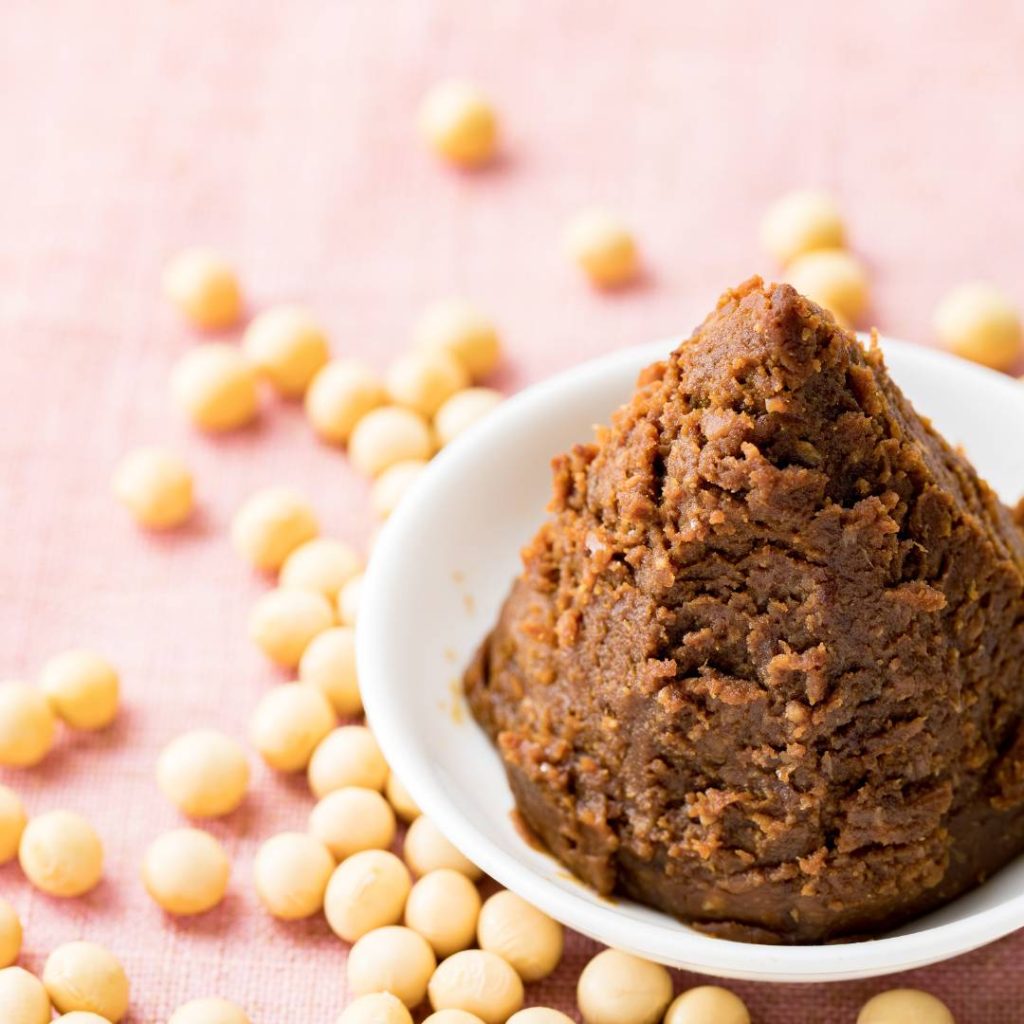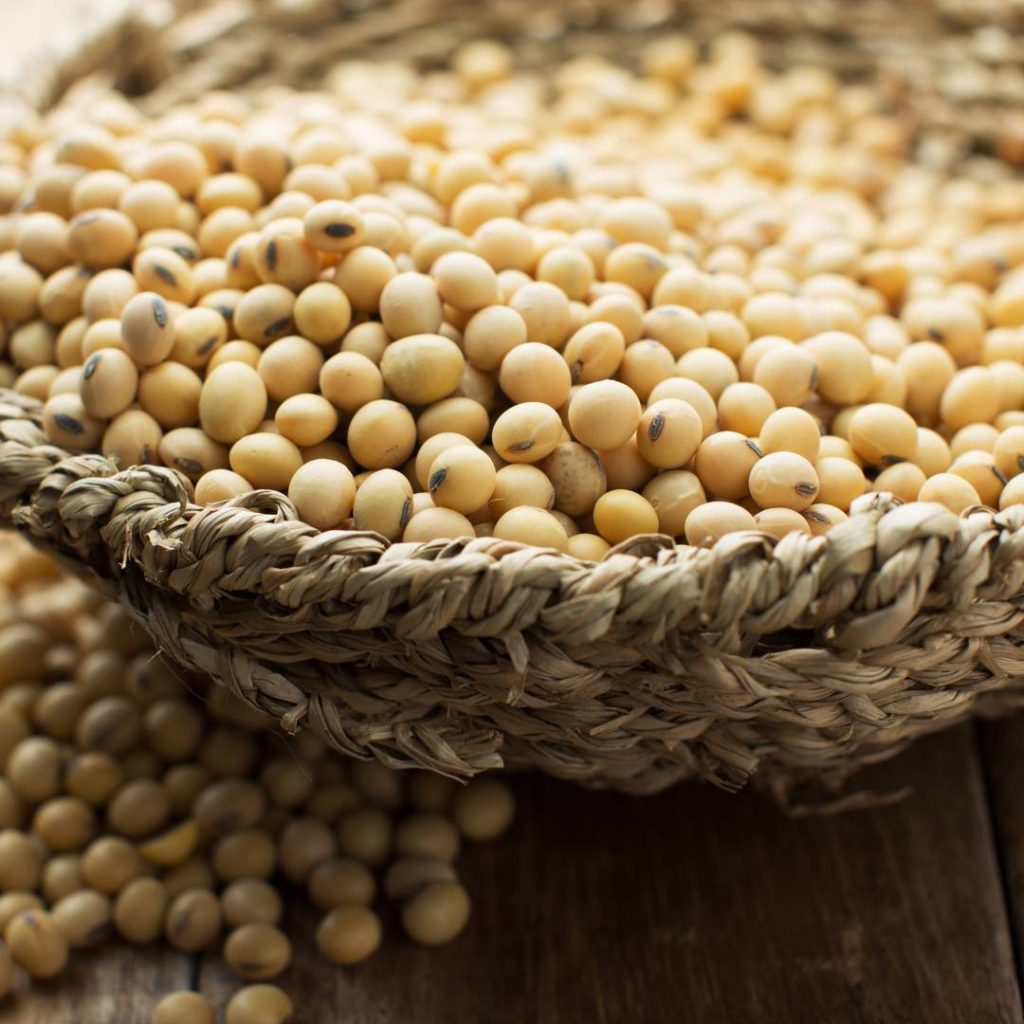Are you curious about what miso paste is made of?
Look no further! In this article, we will delve into the fascinating world of miso paste and uncover its ingredients.

What Is Miso Paste Made Of
Miso paste, a staple in Japanese cuisine, is made through a meticulous fermentation process.
Soybeans, an essential component, play a vital role in its production.
Alongside soybeans, salt is another key ingredient that contributes to the unique flavor of miso paste.
But what sets miso paste apart from other fermented foods is the inclusion of koji culture.
Aspergillus oryzae
This special fungus, known as Aspergillus oryzae, is responsible for breaking down the soybeans and transforming them into a flavorful paste.
As you continue reading, we will explore the different varieties of miso paste and their culinary uses.
So, get ready to uncover the secrets of miso paste and discover how it can add depth and richness to your dishes.

The Fermentation Process of Miso Paste
Let’s dive into the fascinating world of miso paste and uncover the secrets behind its incredible fermentation process!
Miso paste is made from just a few simple ingredients: soybeans, rice or barley, salt, and a special fungus called koji.
The process
The process begins by soaking the soybeans overnight and then cooking them until they become soft.
Next, the cooked soybeans are mixed with cooked grains, usually rice or barley, and the koji fungus is added.
This fungus is responsible for breaking down the starches in soybeans and grains into simple sugars.
Fermentation
The mixture is then left to ferment for several months to develop its unique flavors.
During fermentation, the miso paste undergoes a transformation, becoming rich, savory, and deeply flavorful.
It’s truly remarkable how these basic ingredients come together to create such a complex and delicious condiment.

The Role of Soybeans in Miso Paste Production
Soybeans play a crucial role in the creation of this traditional Japanese condiment, lending their unique flavors and nutrients to the mix.
The first step in making miso paste involves cooking and mashing the soybeans.
This process breaks down proteins and carbohydrates, making them more easily digestible.
Afterward, koji, a type of mold spore, is added to the mashed soybeans.
Koji
The koji helps to kickstart the fermentation process by breaking down the soybeans’ sugars into simpler forms, such as glucose.
This transformation creates a sweet and savory flavor profile.
Additionally, the koji produces enzymes that further break down the soybeans’ proteins, resulting in a rich and umami taste.
The soybeans, along with the koji, are then mixed with salt and water and left to ferment for several months to develop the complex flavors that miso paste is known for.
Exploring the Importance of Salt in Miso Paste
Salt is crucial in the fermentation process of miso, adding depth and enhancing the flavors of this traditional Japanese condiment.
When making miso paste, soybeans are combined with salt and a starter culture called koji.
The salt plays a vital role in this process as it helps to create an environment that’s favorable for fermentation.
It not only helps to preserve the miso by inhibiting the growth of harmful bacteria, but it also promotes the growth of beneficial bacteria that contribute to the unique flavor and texture of miso.

Konnichiwa! (Hello!) I'm Pat Tokuyama, a Japanese tofu cookbook author, who travels for music, food, and adventure. If you like Japanese tea, checkout some of the newestorganic japanese tea, matcha bowls and noren and more!
** Curious about the Plant Based Japanese Cooking Club? ** Learn more here!
Amount of Salt
The amount of salt used can vary depending on personal preference and the desired outcome.
However, it’s important to note that salt also acts as a natural preservative, allowing miso to be stored for long periods of time without spoiling.
So, the next time you enjoy miso soup or use miso paste in your cooking, remember the important role that salt plays in its creation.

Varieties and Culinary Uses of Miso Paste
To fully appreciate the versatility of miso, you need to explore the various types and dishes it can enhance.
Miso paste comes in different varieties, each with its unique flavor profile and culinary uses.
The most common types of miso are white, red, and mixed miso.
White miso, also known as shiro miso, has a mild and slightly sweet taste, making it perfect for light soups and dressings.
Red miso, or aka miso, has a bolder and saltier flavor, ideal for hearty soups and marinades.
Mixed miso is a combination of white and red miso, offering a balanced taste that works well in a wide range of dishes.
From miso soup to glazes, dips, and even desserts, miso paste adds depth and complexity to your culinary creations.
I created some of my favorite miso paste brands, click here to read!
Conclusion
So now you know all about miso paste!
You’ve learned about the fermentation process, the role of soybeans, the importance of salt, and the role of koji culture.
With its rich umami flavor, miso paste is a versatile ingredient that can be used in a variety of culinary creations.
Whether you’re making miso soup, marinades, or dressings, miso paste adds depth and complexity to any dish.
So go ahead and experiment with different varieties of miso paste to elevate your cooking to new heights!
Want to learn everything about miso paste? Read my Miso Paste 101 Blog post now!













Konnichiwa! (Hello!) I'm Pat Tokuyama, a Japanese tofu cookbook author, who travels for music, food, and adventure. If you like Japanese tea, checkout some of the newestorganic japanese tea, matcha bowls and noren and more!
** Curious about the Plant Based Japanese Cooking Club? ** Learn more here!